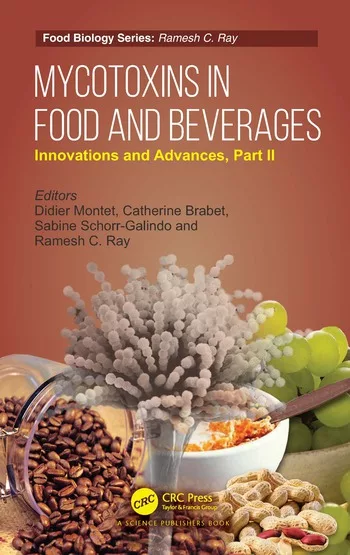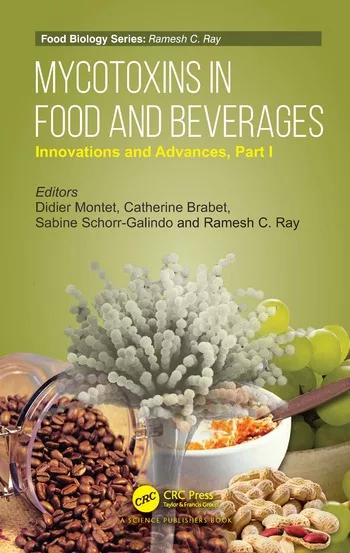Botanicals usage within beverages continues to grow
Teas popular botanicals used by beverage companies
Consumers know the importance of health and wellness. According to a survey conducted by New York-based Nielsen, consumers not only recognize the need to institute a healthy lifestyle, they also are willing to pay for it.
In Nielsen’s “Global Health and Wellness Survey” released in January, 49 percent of global respondents consider themselves obese. Going a step further, consumers are making conscious efforts to change this with 50 percent of respondents saying they are actively trying to lose weight. This could be beneficial to consumer packaged goods manufacturers as 88 percent of survey takers said they are willing to pay more for foods with healthy attributes to some degree.
This interest in health and wellness has helped spark an innovation revolution as beverage-makers are introducing new products that contain less mainstream ingredients in order to provide function.
“As we have been saying for many years, the health-and-wellness focus of the American consumer has encouraged beverage entrepreneurs to develop new beverage concepts with known and unknown herbals and botanicals that tout the beneficial effects of the ingredient in their drinks,” says Gary Vorsheim, vice president of extract sales for Secaucus, N.J.-based Martin Bauer Inc.
Vorsheim adds that when you include teas — white, green, black, etc. — in the botanical category, usage rates have increased and will continue to do so in 2015. Although mainstream national brands have not launched a line of herbal beverages, activity from smaller brands is helping to increase the awareness of these ingredients.
“The American consumer is still leery of herbals/botanicals, although more and more consumers are taking the plunge and trying them out, especially when the herbals are paired with tea and/or well-accepted fruit flavors,” he says. “As was the case with green tea over 10 years ago, product formulators didn’t know how to use green tea, and the same can be said now about the taste of certain herbals being introduced in new beverages today.”
Although not all of these new beverages will be around for the long term, the growing exposure of botanical beverages is slowly wearing the resistance consumers have toward these new and different plant materials, Vorsheim adds.
Randy Kreienbrink, marketing director for Long Beach, Calif.-based BI Nutraceuticals, and Alison Raban, certified food scientist for the company, note that functionality and clean-label talking points for herbals and botanicals appeal to the millennial and baby boomer generations. These aspects also make the ingredient categories appealing to beverage manufacturers.
“Within the botanical category, there are a lot of green tea and herbal type powders and extracts, and then also some of the more the functional caffeine-containing ingredients as well,” Raban says. “I think [beverage-makers] are both looking for functionality, but also they’re looking for a clean-label ingredient or something that’s a little bit more unique in terms of some of the herbs and products from South America or Asia.”
Martin Bauer’s Vorsheim notes that when working with botanicals, brand owners will fall within two distinct categories. “We see two different types of beverage-makers in this market; the ones who follow well-proven ideas/products, and those that are on the forefront of exploring the boundaries of what consumers will consider as they look for something new and different,” he explains. “For the former, tea in all shades and colors is the botanical of choice, with substantial positive consumer recognition and reams of studies and reports touting its healthy attributes.
“The second type of producer is either interested in promoting a new healthy ingredient/product or is truly engaged in the general promotion of botanicals at large due to their potential beneficial value to humans,” Vorsheim continues. “So to answer your question in one word, it is about functionality.”
Know what you’re working with
When working with herbals and botanicals, ingredient suppliers note it is important to select the right product to fulfill the functionality that beverage-makers are looking for.
BI Nutraceuticals’ Kreienbrink notes that in addition to its refreshing taste, customers are requesting green tea for its antioxidant and polyphenol components. However, some of the company’s most popular requests come in relation to energy functionality.
“For as much as the energy drink sector gets a bad rap, our volumes haven’t changed,” Raban says.
Raban and Kreienbrink note that guarana and ginseng are popular botanicals for energy capabilities as well as guayusa, which is relatively new to the North American beverage market. “Guayusa is a new one for us and that’s sort of similar to other botanicals so that’s easy for consumers,” Raban says. “They know what caffeine does, so guayusa, even though they’ve never heard of it, it’s close enough to something they do know.”
In addition to these botanicals, kola and rosemary also can support energy and vitality, Martin Bauer’s Vorsheim says. Other caffeine-containing botanicals that could pop up in new beverages are green mate’ and green coffee bean.
“Green mate’ contains caffeine and antioxidants and has a smoother more acceptable taste than the classic roasted mate’,” he says. “… Green coffee bean contains caffeine and chlorogenic acid, which is felt to have health benefits for heart disease, diabetes, weight loss and other functions.”
Vorsheim adds that mate’, nettle, rosehips, green tea and guarana are popular options for weight control, while hops, lavender and blam mint have associations with calming properties. Balm mint, along with chamomile, fennel and ginger can be used to aid in digestion, he notes.
BI Nutraceuticals' Raban says that the growing popularity of botanical ingredients is bringing new life to staple ingredients. “I think there’s more of the traditional Chinese medicine-type herbs and even something like ginger, which no one would argue that that’s new, but at the same time you’re seeing a lot more ginger-flavored beverages in terms of a functional drink tonic, but also ginger beer that tastes good,” she explains. “I think the 'old is new' is coming back.”
But no matter which botanical formulators are working with, ingredient suppliers note the numerous benefits to including botanicals within beverages.
“Botanicals add value to beverages,” Vorsheim says. “This value can be from the functionality associated with the botanical all the way to the taste from the botanical and also including the color in some cases, such as with hibiscus.
“Botanicals are not just flavors or chemicals, they are plants grown by farmers, not made in the lab,” he continues. “The naturally occurring compounds in the plants provide a combination of attributes that include the natural taste, color and active ingredients.”
BI Nutraceuticals’ Kreienbrink adds that botanicals fulfill the clean-label component and add transparency to a product. “All of our botanical products are not genetically modified organisms,” he says. “We also can offer the option of having it organic if they like, so for the healthy shopper/ consumer we can check off those [criteria] that they might be looking for.”
Botanicals also can allow a brand to differentiate itself in the marketplace. Raban elaborates by suggesting combinations like a hibiscus black tea or a ginger black tea with guarana. “It makes it a little more interesting; a less same old, same old,” she says. “That’s why iced tea is such a good platform. Most people know what they’re getting with iced tea, so if you add something kind of weird to it, there’s that balance. Especially with interesting weird fruits, if you balance it with something they’re used to, it doesn’t seem as exotic or scary.”
Recognizing what works
Although botanicals are becoming more accepted within the North American beverage market, beverage producers still must decide whether they want to work with non-generally recognized as safe (GRAS) ingredients.
“For most mainstream beverage companies, the lack of GRAS certification removes some botanicals from the list of possible materials they will consider for development work,” Martin Bauer’s Vorsheim says. “Many botanicals are GRAS certified, so there are a lot of options to consider. If a non-GRAS DS ingredient is acceptable, than almost any botanical can be considered for food and beverage applications.”
However, GRAS certification is not the only consideration for beverage-makers when formulating with botanicals. “Every botanical is different. The issue with most plant-based ingredients for us on the beverage side is going to be solubility and then bitterness,” BI Nutraceuticals' Raban says. “A lot of the caffeine-containing or the tea-type ingredients are going to be a little bitter, so that’s where you have to work with a good flavor system or a good sweetener like stevia or other non-caloric sweeteners. I would say bitterness is the biggest issue and then solubility.”
She adds that most of BI Nutraceuticals' botanicals are extracts so solubility does not come into play; however, in the case in which it does, consumers are becoming more comfortable with sediment within their better-for-you beverages.
“Consumers are getting better and better about accepting drinks that have a little bit [of sediment] at the bottom,” Raban notes. “Consumers who want cleaner label are going to have to give up buying a perfectly clear, brightly colored product.”
Martin Bauer’s Vorsheim adds that working with botanical extracts allows beverage-makers to work with ingredients that might have been more challenging in their raw material form. Issues such as taste, color, clarity and stability all can come into play with raw material botanicals. “Fortunately these issues can be worked around by using botanical extracts that will contain all of the naturally occurring compounds found in the named botanical,” he explains. “Botanical extracts can be high quality and low quality, but once you select the desired extract, you will have uniformity from batch-to-batch and month-to-month. Letting the experts — botanical extract producers — make the botanical extracts allows the product developer to focus on what they do best, making great tasting beverages with quality ingredients.”
Looking for a reprint of this article?
From high-res PDFs to custom plaques, order your copy today!








